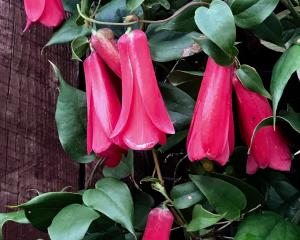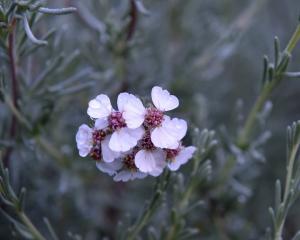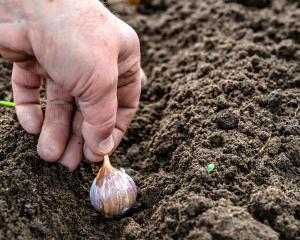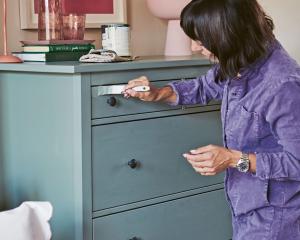Gillian Vine delays planting her tulip bulbs to reflect on their history.
At a daffodil show a couple of years ago, I fell in love with Fencourt Jewel. It looked like a Soleil d'Or with pink cups and white outer petals and was bred by a North Island man who spent years getting pink into this form of narcissus, tazetta.
I wanted one, so got a catalogue from a daffodil grower. Yes, Fencourt Jewel was on his list but, no, I didn't buy it, as a single bulb would have set me back $100.
Connoisseurs will pay the price and I've no problem with that: the new winter skirt I didn't really need cost more.
But imagine paying as much as your house is worth, say $250,000, for one bulb.
Crazy? Probably, yet that's what happened in the 17th century, when a single tulip could change hands for the price of an Amsterdam house.
The Netherlands' tulipomania, as it has been dubbed, lasted only a year or so, from 1636 to 1637, but why Dutch people got so carried away still mystifies historians and economists.
The Dutch were not the first to be hit by tulipomania, as the Turks had promoted tulips as a symbol of wealth and prestige about a century earlier, with production strictly controlled to ensure scarcity and status.
Native to Central Asia, tulips had been cultivated in what is now Turkey since about 1000AD and the word tulip comes from a Turkish word for turban.
Botanist Charles de l'Écluse, or Carolus Clusius as he is generally known, is credited with the introduction of tulips to Europe and in 1583 recorded how he came by his first bulbs.
In 1562 or thereabouts, a cloth merchant from Antwerp found some bulbs in a consignment of goods.
He ate some, thinking they were onions, and threw the rest away. Later, Clusius acquired the unfamiliar bulbs.
Another version suggests he got bulbs or seed from an ambassador to the Turkish sultan's court.
Whatever the story, in the 18th century Dutch tulip fanciers took up hybridising with enthusiasm and developed a bulb market that now sees the Netherlands exporting 1.2 billion bulbs annually.
The Tulipa family is divided into 15 divisions, of which the Darwins and Darwin hybrids are noted for having the largest blooms.
For the home gardener, the formal divisions are probably less important than colour - everything except true blue - height, bloom size, hardiness and the fact that they start flowering when most daffodils have finished.
Queen of the Night and the taller Black Diamond are among the darkest of the "black" tulips, actually deepest maroon. Purple Prince is lighter, while Boccherini is a pretty, late-flowering mauve variety.
Of the reds, Oxford is a reliable old favourite with glistening red silk blooms, while Carlton is an attractive double tulip that looks almost paeony-like.
Orange tulips seemed to be out of favour for a time, so it's pleasing to see Ad Rem, Batavia and Temples Favourite in current catalogues.
Single yellow tulips, such as Golden Parade, are popular for town reserves and if you want something a bit different, look for the double creamy yellow Verona, which flowers early, or Monte Carlo.
Of the pinks, Pink Diamond is a reliable performer, Hermione an excellent double and Beppy, which has a pale base, a lovely strong tulip, while Fancy Frills lives up to its name with fringed petals.
White Dream is a true white, Francois is creamy and Spring Green is white with green stripes on the petals.
Two-toned varieties to look for are Queen of Sheba (orange and yellow), which belongs in division six, the so-called lily-flowered group; bold Abu Hassan (bronze and yellow) or similarly coloured Kees Nelis; or the feathered parrot tulips - Apricot Parrot is early, Rococo Parrot flowers mid-season and Flaming Parrot late.
Species tulips are not as readily available except from specialist growers but Tulipa sprengeri is one worth watching for, as it flowers in November, later than most other tulips.
Southern gardeners have it over their Auckland counterparts when it comes to tulips for these hardy bulbs prefer winters that chill them and low humidity.
They like a sunny spot and can be left for years, although lifting them when the foliage dies down is recommended.
Tulips can go into the ground until the end of this month to flower in spring.
Enrich the soil with bone dust or blood and bone, and if your soil is heavy and gluggy, a little river sand under the bulbs will help drainage.
Plant them with about 5cm of soil over them, sit back and wait for them to flower from October onwards.











